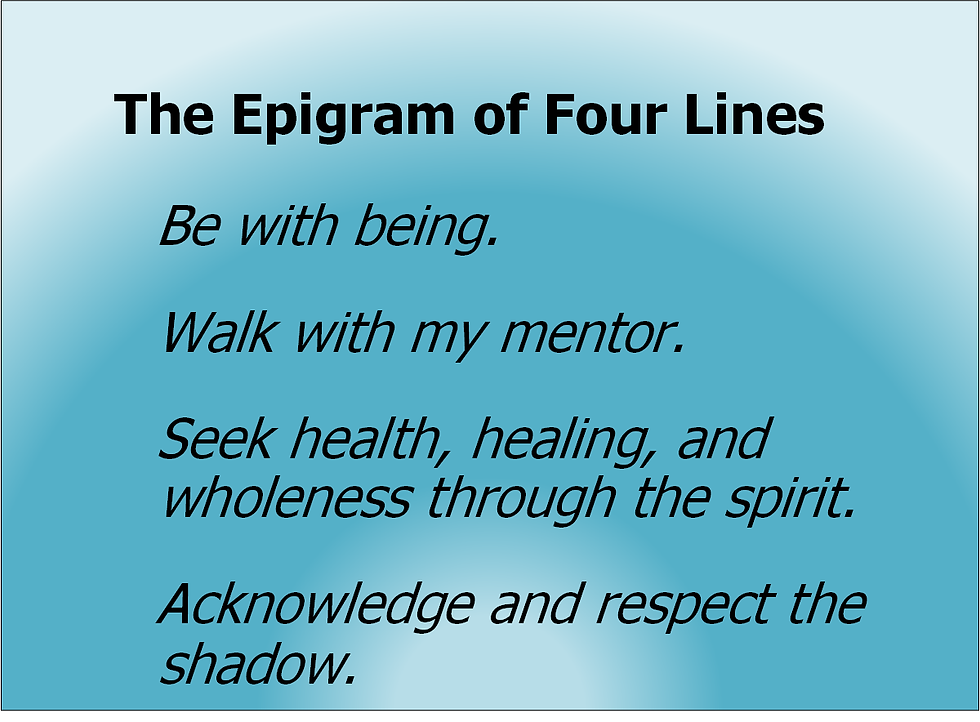Mental Health as a Vision of Ecological Safety | Part 6
- John P. Flynt, PhD
- Oct 31, 2023
- 4 min read
Updated: Nov 12, 2023
Safety in Rituals of Mental Health
Mental Health and Ritual Discovery
Andrea Wulf and Alexander von Humboldt engage in activities characterized by discovery and sharing. While their efforts are oriented toward discovering and sharing historical and scientific knowledge, it is clear to anyone who witnesses their activity that this is not all there is to it. They are motivated by deep commitment, sincerity, openness, and joy. They reach inward to the deepest, most meaningful experiences, and they reach outward in an open, generous, resonant way to others to share what has been discovered. The fluid, uninhibited, open manner in which this takes place provides a model of wellness. Everyone’s path is unique, but essentially, fulfillment involves discovery and sharing.
Discovering and sharing are the basics of “ritual discovery,” ritual discovery characterizes human activity from prehistoric to modern times. It is one of the most essential aspects of human life. All great stories involve or originate from ritual discovery. The story told in The Epic of Gilgamesh, the Odyssey of Homer, The Voyage of the Beagle by Charles Darwin, the story by James Watt in The Double Helix: A Personal Account of the Discovery of the Structure of DNA, Phil Cousineau in The Art of Pilgrimage, or Christopher McDougal in Running with Sherman… All are stories of ritual discovery.
Ritual discovery comprises all activities, great and small, that involve discovery and sharing of meaning in life. Consider things like how to make the perfect mug of tea or how to wash your hair. We discover a path of meaning, and then we tell about it and make it a part of our lives as something we perform. Whenever humans find paths of meaning in their lives that bring fulfillment, they do so through ritual discovery and performance. For this reason, ritual discovery is a primary medium of mental health.
The basic actions of ritual discovery are as follows:
You begin with a moment of safety. The path of discovery begins with the feeling of safety.
You then extend the moment of safety in successive steps, each of which extends the initial the feeling of safety.
The path of discovery continues until you feel that something has been completed—that you have arrived at the end or culminating point of your journey of discovery.
With the feeling of completion, you then consciously recognize and assimilate the discovery; this commonly involves courses of performance:
You feel that he must share what has been found with others. Sharing can be through narration, dramatization, or any form of artistic or scientific performance.
You envision completing the path again, this time with efforts to improve on it with knowledge that emerged during the first discovery, but also with what you have learned through the discovery (in conversations as you have told about it or otherwise).
Ritual discovery enables us to reach what is most meaningful to us. It offers a way to continuously explore life—to reach out into the environment in a manner that broadens attention, deepens meaning, and sustains regenerative health, healing, and wholeness. It is at the basis of self-esteem, self-regulation, stress tolerance, homeostasis, and wellness.
In the path of evolution, nature has made it so that we can develop the capacity of engaging in ritual exploration early in life and perfect it over the whole of our life. As Allan N. Schore has explained (The Development of the Unconscious Mind), in its earliest developmental version, ritual discovery involves learning and telling the story with a happy ending. We learn as children to search for meaning in life through cumulative points at which our efforts have led to meaningful outcomes. The central features in the discovery involves extending safety:
We begin moving from a safe source (caregivers of otherwise) toward what we are seeking with the sense of safety.
We exert ourselves against resistance to complete the task.
We then recognize that we have completed a task that contributes to the confidence we feel in our strengths and purpose.
It is important to emphasize that self-esteem, stress tolerance, and emotional regulation are developed in this way.
While the elementary happy-ending story is an important development of childhood, with growth toward adulthood, the scenario is extended. This extension involves what Carl Jung referred to as the individuation of Self (Modern Man in Search of a Soul), and it what Joseph Campbell, in his elucidation of Jungian thought, described in his Hero with a Thousand Faces, as life’s journey.
But while Jung and Campbell describe a life-long journey, ritual exploration is also something that is repeated innumerable times during the journey. It is the means by which we discover how we find purpose in life by moving from one feeling of safety to another feeling of safety. This path is not that of meeting a single task and completing it—although this is part of it. It is instead what might be viewed as learning to feel that something that is meaningful and fulfilling for us comes next, time after time, as we move through life.
2023 © John P Flynt, PhD | Your Horizon Counseling



